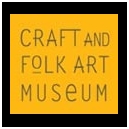Tarot's history and meaning on exhibit at Craft and Folk Art Museum
- ‹ previous
- 14 of 14
Tarot's history and meaning on exhibit at Craft and Folk Art Museum
Robert M. Place, a Tarot scholar and illustrator who has designed several decks, is curating the show.
Source: http://www.latimes.com/entertainment/news/la-ca-tarot24-2010jan24,0,5198168.story
The cards also represent an artistic tradition, and the show he's curated for the Craft and Folk Art Museum, "The Fool's Journey: The History and Symbolism of the Tarot" (opening today), takes us on a colorful journey through that tradition. Sometime during the 15th century in northern Italy, the deck evolved from playing cards. Then the French got hold of it, and soon standardized the set -- five suits, with one made up solely of trumps, 22 of them, also known as the Major Arcana.
The imagery of the trumps -- figures such as the Magician and the High Priestess, as well as personifications of virtues and states of being -- have been heavily influenced by Christian symbolism, Neoplatonism and Romanticism. The exhibition features these, with each illustrated by an enlargement from Place's newest Tarot deck (he's done five before), and accompanied by half a dozen or so other examples, including those from the historic Marseilles deck and the popular Waite-Smith deck.
The story begins with the Fool since, says museum director Maryna Hrushetska, "The fool's journey is basically the metaphor for our life. All experiences come to us, and we're challenged to get to the next level." The set ends with the World, which, she says, is enlightenment.
"The Tarot is effectively a collective art form, " says Hrushetska, "and reflects the universal human desire for understanding and spiritual fulfillment. Infused with a holistic philosophy of life, where all things are connected and valued, the Tarot sublimely embodies the spirit of CAFAM and its mission."
In the early cards, the Fool was an itinerant entertainer, dressed in clownish costumes, often with dogs nipping at his heels. Over time, the dog became his friend, and in Place's newest version, he has become she -- a woman with donkey's ears strapped around her forehand, dancing with a friendly dog. He admits he was heavily influenced by a sketch by pre-Raphaelite artist Edward Burne-Jones.
The World is usually illustrated by a figure in a circle or a wreath, representing a state of grace or wisdom. Though Place, who lives in New York state, has used that same motif, he's put the four cardinal virtues in the four corners where other decks have placed symbols for the Evangelists of the Gospel. He points out that it was believed that we would come to enlightenment through the virtues. "That connects with the original message in Tarot," he says. "I've used the Tarot as a window into our Western mystical tradition."
-- Scarlet Cheng- LA TIMES
- Craft and Folk Art Museum's blog
- Login to post comments
-




